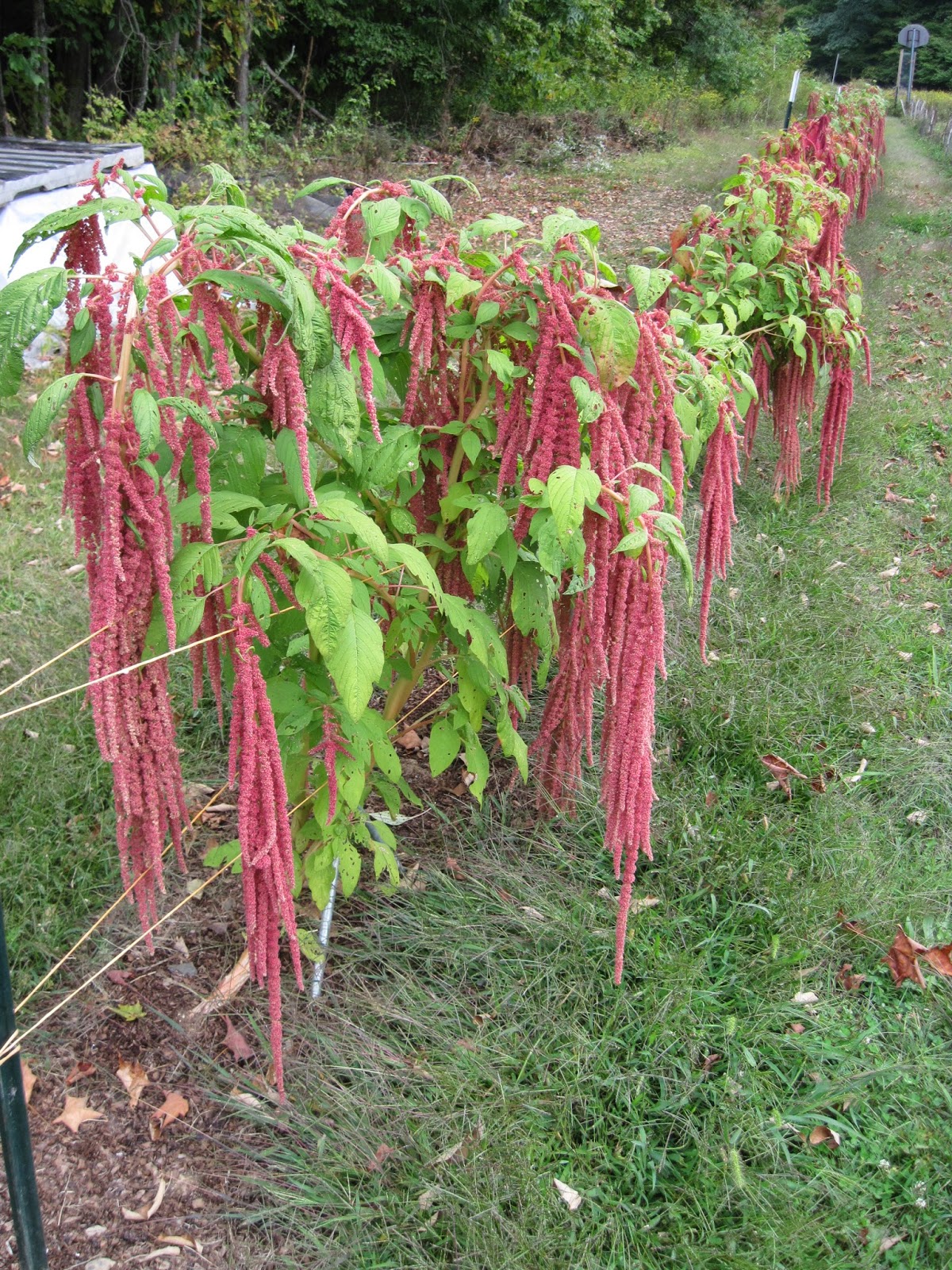I have written about container gardening before, and my use of containers in vegetable and flower gardening has only increased since. The photo above is an example of one area, on my driveway, where I have containers (I likely have 50 outside right now). Here is what I grow in containers:
1. Tropical plants, like bananas, that I want to overwinter and grow again next year. These plants are either brought into unheated shelter, like my garage (for example, plants that grow from bulbs and die back) or live out the winter in my heated, but cool, attic under florescent lights (citrus, bananas, coffee, mangoes, hibiscus, Indian curry leaf tree).
2. Plants I have not yet planted that need a temporary home.
3. Plants that I will use in my botanical drawings (in the photo above I have white milkweed, mullein, and cotton plants for this purpose).
4. Peppers: for some reason, bell and hot peppers do better for me in pots than in the ground.
5. Plants that look lovely in pretty pots: dwarf Japanese maples, voodoo lilies, and "Snow on the Mountain" dwarf pine.
Some containers I use are are more utilitarian (for annual veggies), other more ornamental (for permanent plantings). A few tips with containers:
-Unglazed terracotta pots dry out fast, they wick away moisture. Plus, they may crack if left outdoors over winter.
-Annual veggies, like tomatoes and peppers, need all the growing space they can get: do not fill the bottom of the pot with styrofoam peanuts, gravel or broken pottery. If your soil is good, they don't need extra drainage.
-Saucers under pots can cause root rot. One sign of over-watering is
guttation: this is when water drips from the leaves: it is the plant's attempt to get rid of excess water in the soil.
-Plants that winter outdoors in cold climates need protection, as do ceramic pots. Perennials need a generous-sized pot, lined with bubble wrap on the sides (not the bottom) to protect the roots from freezing. Draping or wrapping the pot with burlap also helps protect the pot and provides further insulation for the roots.
-When you bring pots in for the winter, check for bugs. I douse the soil with a BT solution (it's organic: a naturally-occurring bacteria that kills insects) to kill fungus gnats and I spray the plants with commercial insecticidal soap spray.
Search this blog for other postings on containers!
Happy gardening!


















































.JPG)

